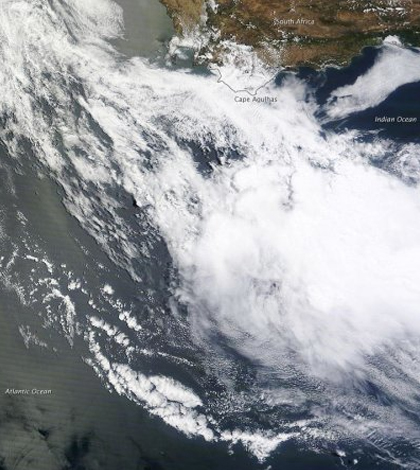North Pacific Ocean Warming Could Lead To More Dead Zones

The dead zones found are similar to the one pictured from the Moderate Resolution Imaging Spectroradiometer on NASA's Terra satellite in late 2011. (Credit: NASA Earth Observatory)
While the tendency may be to think of climate change effects as gradual, marine sediment evidence suggests that some large climate effects on the ocean, such as the development of low-oxygen North Pacific “dead zones,” can occur quickly and without warning, creating conditions that linger for as long as 1,000 years, according to a release from Oregon State University.
Marine sediment core evidence collected for decades gave researchers at the school an accurate look at climate change in the North Pacific for thousands of years. Trace amounts of plankton biomarkers gave high-resolution temperature records.
According to the sediment records, large, low-oxygen dead zones formed in the North Pacific 14,700 years ago and 11,500 years ago following significant climate warming. It is believed that more recent warming in the Northeastern Pacific and Bering Sea, in waters called “The Blob,” may lead to another large, lingering dead zone in the North Pacific.
Top image: The dead zones found are similar to the one pictured from the Moderate Resolution Imaging Spectroradiometer on NASA’s Terra satellite in late 2011. (Credit: NASA Earth Observatory)




0 comments